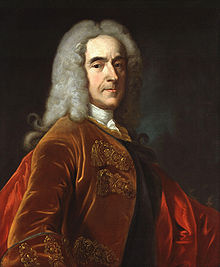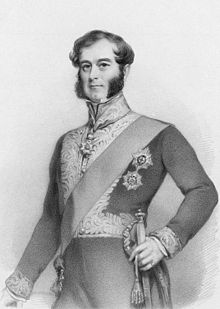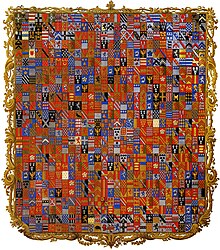Duke of Buckingham, referring to Buckingham, is a title that has been created several times in the peerages of England, Great Britain, and the United Kingdom. There were creations of double dukedoms of Buckingham and Normanby and of Buckingham and Chandos. The last holder of the dukedom died in 1889 and the title is currently extinct.
Marquess of Buckingham was a title that has been created two times in the peerages of England and Great Britain.

George Nugent-Temple-Grenville, 1st Marquess of Buckingham,, known as George Grenville before 1779 and as The Earl Temple between 1779 and 1784, was a British statesman.

Richard Temple, 1st Viscount Cobham was a British soldier and Whig politician. After serving as a junior officer under William III during the Williamite War in Ireland and during the Nine Years' War, he fought under John Churchill, 1st Duke of Marlborough, during the War of the Spanish Succession. During the War of the Quadruple Alliance Temple led a force of 4,000 troops on a raid on the Spanish coastline which captured Vigo and occupied it for ten days before withdrawing. In Parliament he generally supported the Whigs but fell out with Sir Robert Walpole in 1733. He was known for his ownership of and modifications to the estate at Stowe and for serving as a political mentor to the young William Pitt.

Richard Temple-Nugent-Brydges-Chandos-Grenville, 1st Duke of Buckingham and Chandos, styled Earl Temple from 1784 to 1813 and known as the Marquess of Buckingham from 1813 to 1822, was a British landowner and politician.

Baron Lyttelton is a title that has been created once in Peerage of England and twice in Peerage of Great Britain, both times for members of the Lyttelton family. Since 1889 the title has been a subsidiary title of the viscountcy of Cobham.

Lord Kinloss is a title in the Peerage of Scotland. It was created in 1602 for Edward Bruce, later Master of the Rolls, with remainder to his heirs and assigns whatsoever. In 1604 he was also made Lord Bruce of Kinloss, with remainder to his heirs male, and in 1608 Lord Bruce of Kinloss, with remainder to any of his heirs. He was succeeded by his son, the second Lord, who was killed in a duel in 1613.

Earl Temple of Stowe, in the County of Buckingham, is a title in the Peerage of the United Kingdom. It was created in 1822 for Richard Temple-Nugent-Brydges-Chandos-Grenville, 2nd Marquess of Buckingham, who was created Marquess of Chandos and Duke of Buckingham and Chandos at the same time. In contrast to the Marquessate and Dukedom, which were created with remainder to the heirs male of his body only, the Earldom was created with remainder to (1) the heirs male of his body, failing which to (2) the heirs male of his deceased great-grandmother the 1st Countess Temple, failing which to (3) his granddaughter Lady Anna Grenville and the heirs male of her body, and then to possible younger daughters of Lord Temple and the heirs male of their bodies.
The Baronetcy of Temple, of Stowe, in the Baronetage of England, was created on the 24th of September 1611 for Thomas Temple, eldest son of John Temple of Stowe, Buckinghamshire. His great-grandson Sir Richard, 4th Baronet, was created Baron Cobham on 19 October 1714, and Viscount Cobham and Baron Cobham on 23 May 1718, the latter with a special remainder, failing his male issue to his sisters and their heirs male. Upon his death on the 13th September 1749, the barony of 1714 became extinct. Both the viscountcy and barony of 1718 passed to his elder sister, and the baronetcy passed to his second cousin once removed William Temple, of Nash House, who became 5th Baronet. On the death of Sir William's nephew Sir Richard Temple, 7th Baronet, on 15 November 1786, the baronetcy became dormant.
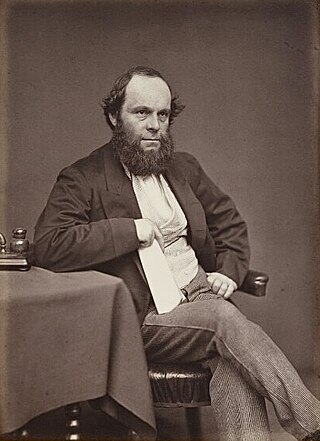
Richard Plantagenet Campbell Temple-Nugent-Brydges-Chandos-Grenville, 3rd Duke of Buckingham and Chandos, styled Earl Temple until 1839 and Marquess of Chandos from 1839 to 1861, was a British soldier, politician and administrator of the 19th century. He was a close friend and subordinate of Benjamin Disraeli and served as the Secretary of State for the Colonies from 1867 to 1868 and Governor of Madras from 1875 to 1880.
Earl Nugent was a title the Peerage of Ireland. It was created on 21 July 1776 for Robert Craggs-Nugent, 1st Viscount Clare, with remainder, failing heirs male of his body, to his son-in-law The 3rd Earl Temple and the heirs male of his body. Craggs-Nugent had already been made Baron Nugent, of Carlanstown in the County of Westmeath, and Viscount Clare, in the Peerage of Ireland on 19 January 1767. He died 13 October 1788, when the barony and viscountcy became extinct, and the earldom, under the terms of the special remainder, passed to his son-in-law, formerly known as Lord Temple, now The 1st Marquess of Buckingham. The earldom remained in his family until the death of The 5th Earl Nugent, also The 3rd Duke of Buckingham and Chandos, on 26 March 1889. See Viscount Cobham for further history of the title. The barony of Nugent was revived in 1800 in favour of his daughter, Mary, Marchioness of Buckingham. See Baron Nugent.

Richard Plantagenet Temple-Nugent-Brydges-Chandos-Grenville, 2nd Duke of Buckingham and Chandos,, styled Viscount Cobham from birth until 1813, Earl Temple between 1813 and 1822 and Marquess of Chandos between 1822 and 1839, was a British Tory politician. He served as Lord Privy Seal between 1841 and 1842.
There has been a Lord Lieutenant of Buckinghamshire almost continuously since the position was created by King Henry VIII in 1535. The only exception to this was the English Civil War and English Interregnum between 1643 and 1660 when there was no king to support the Lieutenancy. The following list consists of all known holders of the position: earlier records have been lost and so a complete list is not possible. Since 1702, all Lord Lieutenants have also been Custos Rotulorum of Buckinghamshire.

Stowe House is a grade I listed country house in Stowe, Buckinghamshire, England. It is the home of the private Stowe School and is owned by the Stowe House Preservation Trust which, by 2013, had spent more than £25m on restoration. Stowe House is regularly open to the public.

Charles George Lyttelton, 8th Viscount Cobham, known as The Lord Lyttelton from 1876 to 1889, was a British peer and politician from the Lyttelton family. He was a Liberal Member of Parliament.
William Stephen Temple-Gore-Langton, 4th Earl Temple of Stowe, known as William Gore-Langton until 1892, was a British Conservative politician.
Sir Richard Grenville was a British politician who sat in the House of Commons from 1715 to 1727.
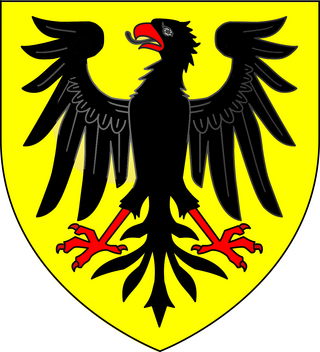
Sir Richard Temple, 3rd Baronet, KB was an English politician who sat in the House of Commons at various times between 1654 and 1697.
Mary Elizabeth Morgan-Grenville, 11th Lady Kinloss was a British peeress.

The Lyttelton family is a British aristocratic family. Over time, several members of the Lyttelton family were made knights, baronets and peers. Hereditary titles held by the Lyttelton family include the viscountcies of Cobham and Chandos, as well as the Lyttelton barony and Lyttelton baronetcy. Several other members of the family have also risen to prominence, particularly in the field of cricket.


